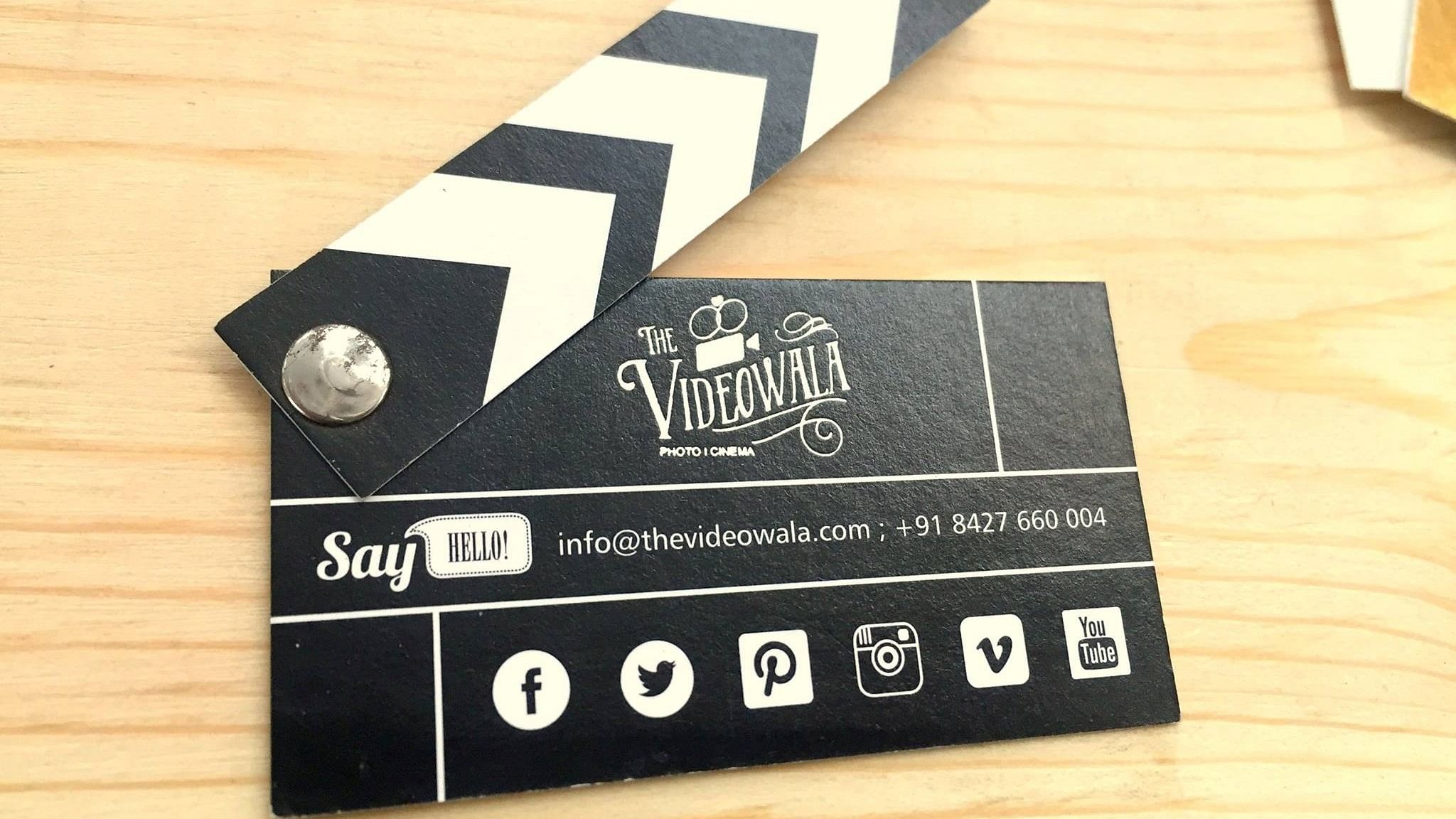
Cards modelled after clapboards and permanent residency cards are trending.
Credit: Chappai.com
Aside from a firm handshake, unique business cards leave a good first impression. Despite the advent of the digital era, where one can find most details online, a business card still exudes professionalism with human connection. They convey a person’s or brand’s unique identity.
Here’s a deep dive into the world of visiting cards and the latest trends.
Trend watch
Simple layouts and elegant typography with minimalistic designs continue to impress. Cards with NFC and QR codes that connect physical cards to websites are the newest trend. Eco-friendly visiting cards, made with materials like recycled paper, FAC-certified papers, wood or metal, are selling like hotcakes.
Clapboard lookalike cards for a video production company, wine glass-like cutout cards, and cards for migration consultants with maps are among some new-age designs. In terms of embellishment, gold-embossed and customised design cards are trending. “They render a touch of luxury to one’s business,” says Satyendra Gupta, founder of Hyderabad-based Creative Force Communication (Printasia.in).
Most customers opt for letterpress printed (where the ink prints on a raised surface, resulting in a debossed impression), digital printed, and die-cut cards, observes Rajesh Batra, founder of Chappai.com, Chandigarh. The die-cut cards are preferred in round, rectangular, circular-edged cards and other custom shapes, Batra adds.
Both glossy and matte finish cards, and embossed cards are popular internationally, say industry experts. “UV-embossed cards and those made with translucent material also look professional,” says Aqsa from Vistaprints, an online platform.
Despite innovation in designing and presentation, the making process remains the same, says S J Pillai, CEO of Mudrikaa Prints, Bengaluru. “Spot UV (a glossy coating on a specific area of the card that creates a combination of shiny and matte finish) and gold foil cards have an elegant and sophisticated finish,” he says.
Behind the scenes
The process kickstarts by conceptualising the design. Then layout, typography, colour and materials to be used are considered. Once the cards are printed, they are either die-cut or sliced into specific shapes, sizes or dimensions. Often nowadays, lamination, embossing, or special coatings are added to visiting cards.
Satyendra says: “We often use AI tools to design logos. It makes the process easier and quicker.” However, Pillai sticks to conventional software like CorelDraw to create and develop designs.
Depending on the material used and designs chosen, visiting cards can take around a week to process. With the arrival of several online platforms, producing these cards is possible in 5 to 7 days (with standard designs) and within two weeks (with customisation). Most portals ask for a minimum order of 500 pieces.
“It can take up to 20 days to make cards that require electroplating, foiling, embossing, or laser cutting,” says Rajesh.
Customer choices
Basic white-coloured visiting cards with plain, simple fonts are a thing of the past. “Everyone wants their card to stand out. Often customers suggest colours and fonts, and send us references of cards they liked online,” notes Pillai.
Designing visiting cards is often a collaborative process. While companies pitch design ideas, the final layout is approved by the clients, says Satyendra. Customers nowadays invest more into high-quality cards (made from high-
quality paper/cardboard or with wood or metal that will not tear easily) unique cards, Rajesh adds.
Most orders for visiting cards come from cities like Delhi, Mumbai, Bengaluru and Hyderabad, and are ordered by businessmen, say industry sources.
Future ahead
Apart from their use in sharing contact details, business cards also serve as a reflection of identity, innovation and culture, say industry experts. As the business scenario evolves, they say the future of visiting cards is likely to change.
“In the future, these cards may come with customisable digital displays, which will provide direct access to their online profiles,” says an industry observer. However, Satyendra believes such trends may not take off as most people are wary of cyber fraud.
Quick pointers
Select a good designer and platform that can understand the requirements of your business, says Pillai. Before finalising the card, make sure that the design, colours, and fonts are in line with your brand’s design requirements. “It is ideal for a brand to take guidance from an advertising or branding agency before finalising a card design,” adds Batra.
Still relevant?
Visiting cards are still in demand, especially in India. “Unlike in the West, Indians prefer to call people rather than send an email,” Pillai says.
Satyendra adds, “Nowadays, visiting cards come with QR codes. These take the person scanning them to corresponding websites within seconds.”
Digital services
Online platforms provide a selection of templates, customisation choices, and delivery options. Aqsa says her website offers choices in terms of materials and designs.